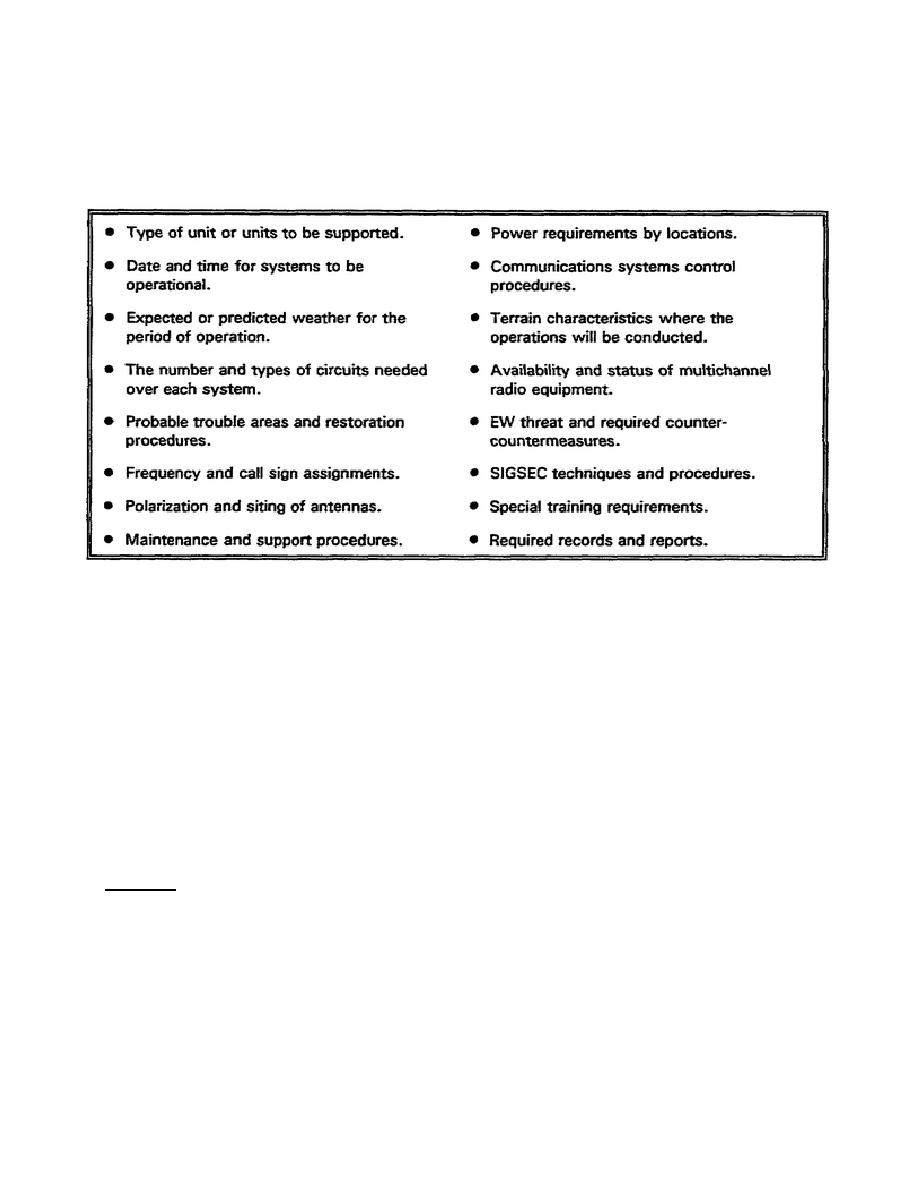
c. Multichannel planning considerations. Table 3-3 lists key multichannel planning factors.
Some key factors are discussed below. Chapter 4 of FM 24-16, Communications-Electronics
Operations Orders, Records and Reports, and Chapter 2, 4, and 5 of TC 24-21, Tactical Multichannel
Table 3-3. Multichannel Planning Considerations
(1) The division signal battalion provides multichannel communications and the signal
officer in a CSS unit does the planning for its use. The initial concern is locating where line-of-sight
(LOS) is achieved. The signal officer must express his concerns when potential problems exist. He
should be on the reconnaissance team and recommend against operating near high voltage in, in valleys,
or adjacent to large structures like bridges and buildings.
(2) Signal planners must stress the concept of standardizing multichannel circuits. This
increases familiarity of operators with signal demands and aids the installation, operation, and
maintenance of the circuits.
d. The signal officer in a CSS unit must coordinate personally with division signal battalion
personnel. The best signal operations occur when key planners discuss frequencies and antennas, look
at maps, and review previous exercises during the planning process.
3. Summary. In this lesson, you learned about the purpose and format of the signal annex. You also
learned key planning considerations for single-channel radio, wire, and multichannel communications.
You must know these planning considerations to be a successful signal officer in a CSS unit.
SS0124
3-6



 Previous Page
Previous Page
